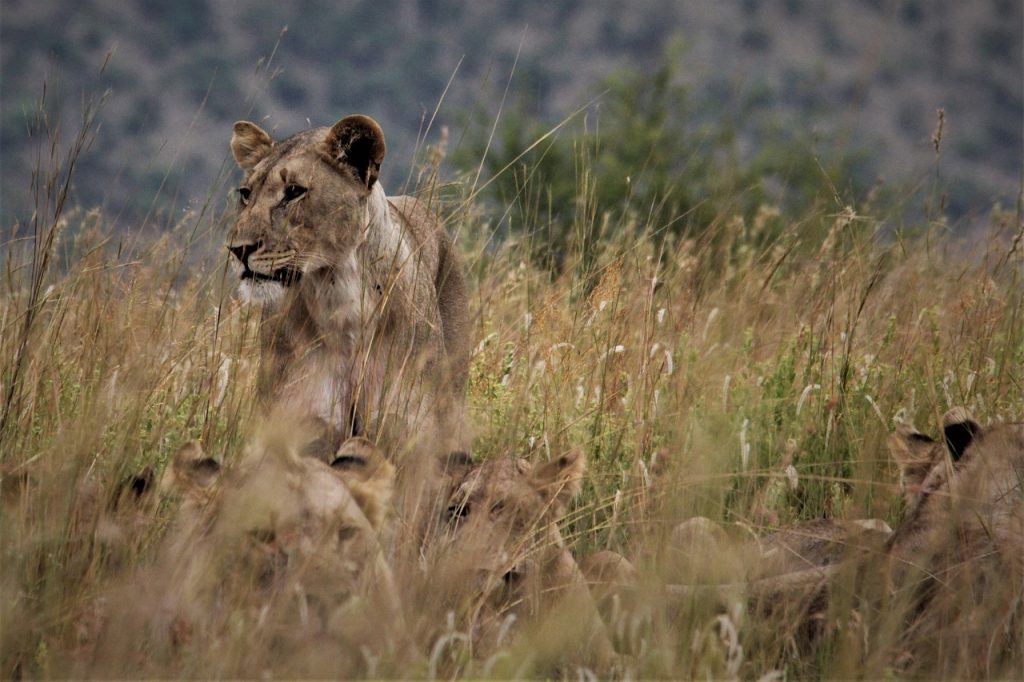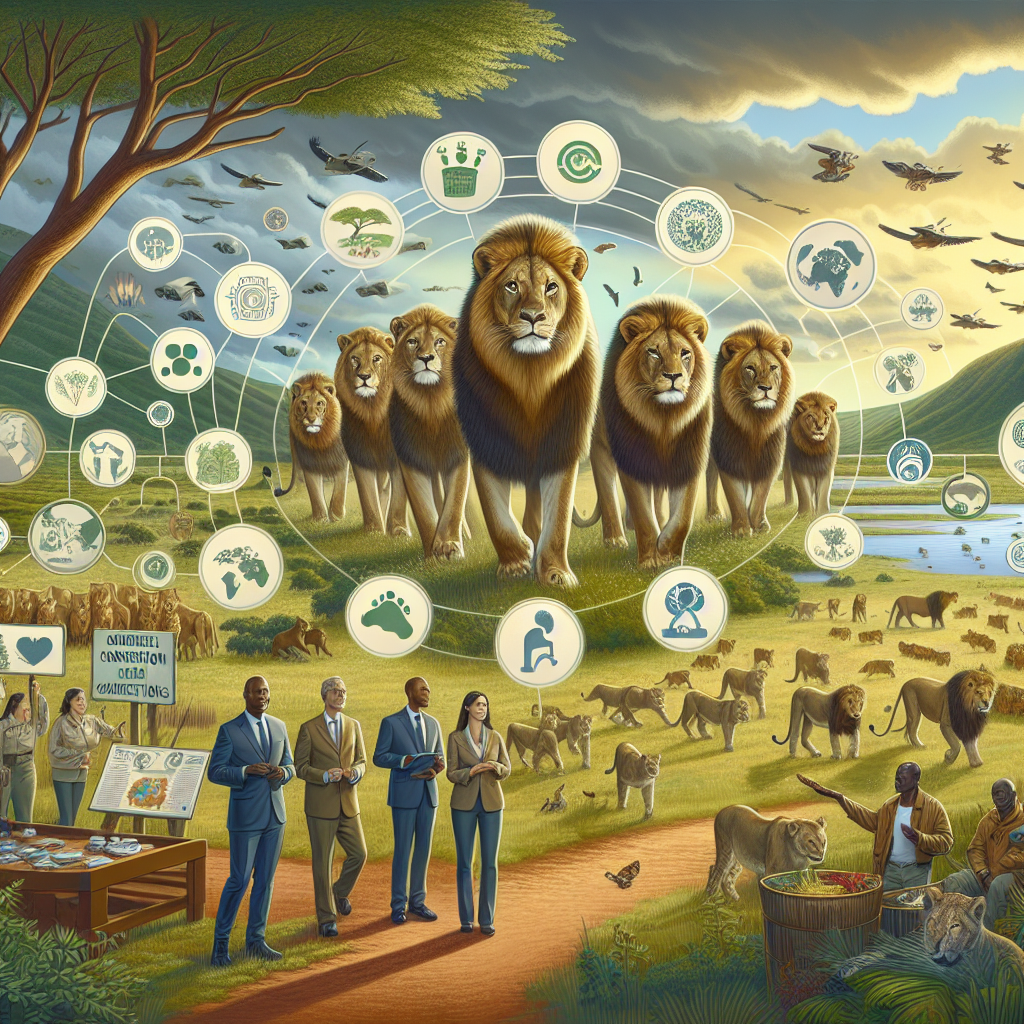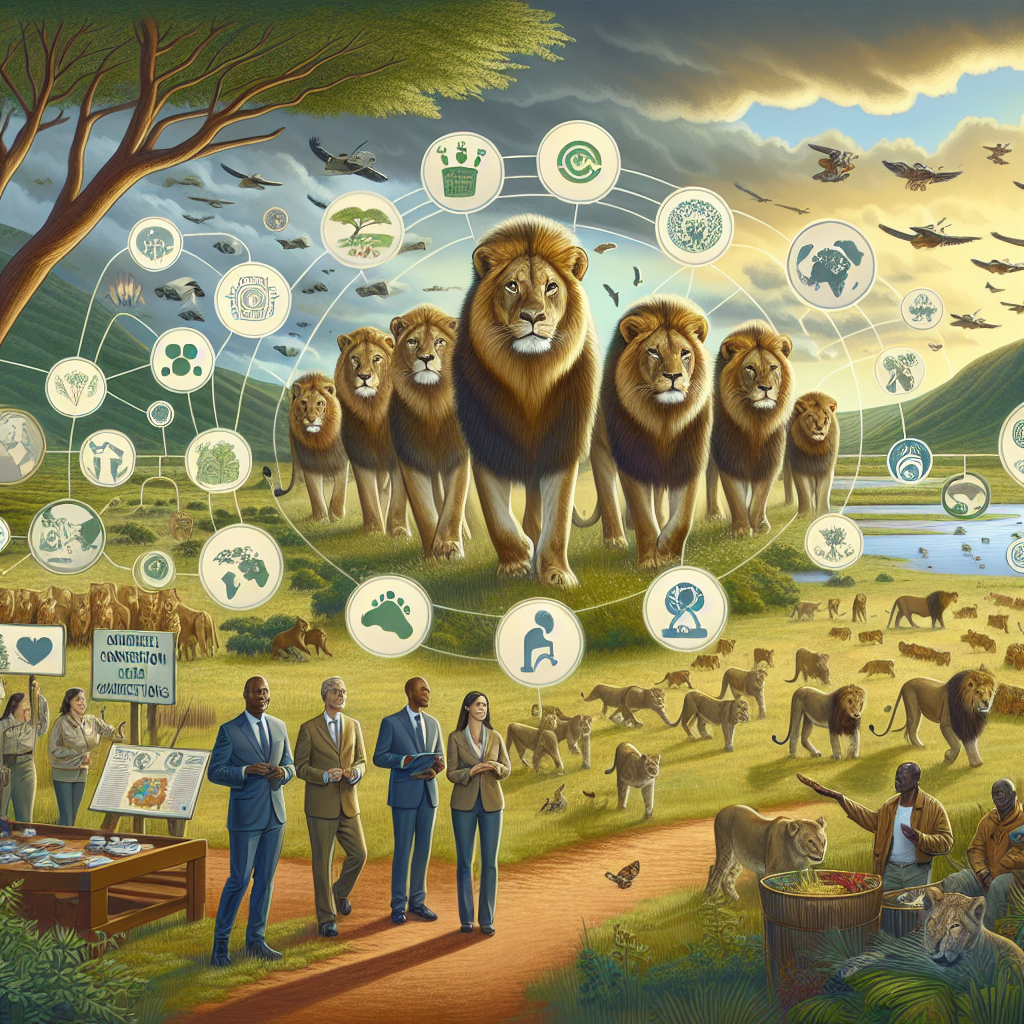In the fascinating world of lion conservation, there are tales of triumphant success stories that captivate the hearts of conservationists and wildlife enthusiasts alike. But what exactly makes these stories work? Who better to ask than the experts themselves? In this article, we will explore the untold secrets behind the successful efforts to protect and preserve the magnificent lion population, as shared by those on the forefront of lion conservation. Get ready to be inspired and enlightened as we unveil the strategies and initiatives that have led to the remarkable triumphs in lion conservation.
Overview of lion conservation
Lion conservation is a critical endeavor aimed at safeguarding the future of these majestic creatures. Lions, once widely distributed throughout Africa and parts of Asia, are now facing a significant decline in their populations. This decline can be attributed to a variety of factors, including habitat loss, human-wildlife conflict, poaching, and a decline in prey availability. As a result, conservation efforts have become increasingly vital to protect these iconic animals and ensure their survival for future generations.
The decline of lion populations
The decline of lion populations over the years has been alarming. In Africa alone, lion numbers have decreased by nearly 50% over the past 25 years. This decline can be attributed to various factors, such as habitat loss due to human encroachment, the fragmentation of lion territories, and the depletion of prey species. Additionally, lions are often targeted by poachers due to the demand for their bones, skin, and other body parts. These threats, coupled with human-wildlife conflict, where lions are seen as a threat to livestock and human safety, have led to a severe decline in lion populations across their range.

The importance of lion conservation
Lion conservation is of utmost importance for several reasons. Firstly, lions are apex predators and play a crucial role in maintaining the balance of the ecosystems they inhabit. They help regulate prey populations, which in turn, affects the vegetation and overall biodiversity. Secondly, lions hold significant cultural and symbolic value in many African societies. They are revered as powerful and majestic creatures, often representing strength, bravery, and leadership. Lastly, lions have substantial economic value, serving as a major attraction for wildlife tourism, generating revenue and providing job opportunities for local communities. For these reasons, lion conservation is not only essential for ecological sustainability but also for the well-being and livelihoods of communities living alongside them.
Community-based conservation initiatives
Involving local communities in conservation efforts has proven to be highly effective in lion conservation. Engaging with local communities helps foster a sense of ownership and responsibility towards conservation. By involving community members in decision-making processes and providing them with the necessary knowledge and skills, they become empowered to actively participate in protecting lions and their habitats. This approach not only enhances conservation outcomes but also helps address the root causes of human-wildlife conflict. Moreover, communities can become important allies in reporting wildlife crimes, contributing to better anti-poaching efforts.
Creating economic incentives for communities to protect lions is another crucial aspect of community-based conservation. Local communities often bear the costs of living alongside wildlife, experiencing livestock predation and crop damage. By providing alternative sources of income through initiatives like eco-tourism and sustainable wildlife-based tourism, communities can benefit directly from conserving lions. Such initiatives can generate revenue for communities, stimulate local economies, and create employment opportunities, which reduces their reliance on potentially harmful practices such as poaching or encroachment into lion habitats.

Protected areas and national parks
Establishing protected areas specifically dedicated to lion conservation is an important step in preserving their populations. Protected areas provide safe havens where lions can thrive, free from the threats they face outside these boundaries. These areas are carefully selected based on their suitability for lion habitats and the presence of suitable prey species. They can range from national parks to community-managed conservancies and reserves. Crucially, protected areas need effective management to ensure the welfare of lions and their habitats.
Effective management of national parks is vital for lion conservation. This involves enforcing strict protection measures, such as anti-poaching patrols, surveillance systems, and monitoring of wildlife populations. Additionally, habitat management, including implementing strategies to restore and maintain suitable lion habitats, is crucial. Collaborating with local communities and involving them in park management can help promote cooperation, reduce human-wildlife conflict, and improve the overall success of conservation efforts.
Collaborative conservation efforts
Networking and partnerships among conservation organizations are pivotal to the success of lion conservation. Collaboration allows for the sharing of knowledge, resources, and expertise, enabling more comprehensive strategies to be developed and implemented. By working together, conservation organizations can address complex challenges more effectively and maximize their impact. This collaborative approach also promotes knowledge exchange and innovation, leading to more adaptive and sustainable conservation practices.
International collaboration for transboundary lion conservation is essential due to their wide-ranging nature. Lions move across vast territories, often crossing international borders. Therefore, cooperation between different countries is vital to ensure the conservation of lion populations. This can involve the establishment of transfrontier conservation areas, where neighboring countries collaborate to protect shared lion populations. Effective sharing of information, joint research efforts, and coordinated conservation strategies can help safeguard lion populations and maintain their genetic diversity.

Anti-poaching and law enforcement
Anti-poaching units play a crucial role in protecting lions from the threats of poaching and illegal wildlife trade. These specialized units are trained to prevent and intercept illegal activities targeting lions, including the poaching of lions for their body parts. Anti-poaching efforts involve rigorous patrolling, surveillance, intelligence gathering, and the apprehension of poachers. Additionally, targeted campaigns to raise awareness about the consequences of poaching and the importance of conservation are essential in changing attitudes and behaviors towards wildlife.
Effective enforcement of wildlife protection laws is equally important. Legislations that prohibit poaching, wildlife trafficking, and the illegal trade of lion parts need to be enforced rigorously to act as a deterrent. This requires a well-equipped and trained law enforcement apparatus, supported by adequate funding and commitment from governments. Strengthening penalties for wildlife crimes and implementing stringent penalties for offenders can help reduce the demand for illegal lion products and protect the species from further harm.
Habitat restoration and management
Rehabilitation of degraded lion habitats plays a crucial role in their conservation. Human activities, including agriculture, deforestation, and infrastructure development, have resulted in the degradation and fragmentation of lion habitats. Restoration efforts involve rehabilitating degraded areas through reforestation, removing invasive species, and implementing sustainable land-use practices. By restoring lion habitats, the availability of prey species can be increased, and the overall health of the ecosystem can be restored.
Implementing sustainable land and wildlife management practices is equally crucial. This includes measures such as controlled burning, rotational grazing, and responsible land-use planning. These practices help maintain the balance between livestock production, agriculture, and wildlife conservation, ensuring that both human and animal needs are met sustainably. Collaboration between conservation organizations, governments, and local communities is vital in implementing and promoting these practices.

Public awareness and education
Educating local communities about the importance of lions is fundamental to conservation efforts. By raising awareness about the ecological value of lions and their link to tourism revenue, communities can develop a greater appreciation for these animals. This can be done through community outreach programs, school curricula, and awareness campaigns, emphasizing the need for coexistence and responsible actions towards wildlife. Knowledge about the importance of lions and the benefits of conservation can foster a sense of pride and stewardship among community members, leading to increased support for conservation efforts.
Campaigns to raise global awareness about lion conservation are equally important. Through media, documentaries, and social platforms, the plight of lions can be shared with a wider audience. These campaigns can highlight the threats lions face, the success stories of conservation efforts, and the actions individuals can take to support lion conservation. By reaching a global audience, these campaigns can mobilize resources, advocacy, and public pressure to ensure that lions remain a priority on the conservation agenda.
Research and monitoring
Scientific studies on lion behavior and ecology are essential for devising effective conservation strategies. Understanding the social structure, reproductive patterns, and foraging behavior of lions provides valuable insights into their conservation needs. These studies can help identify key areas for intervention, such as the protection and management of critical habitats or the development of targeted anti-poaching strategies. Research also contributes to our knowledge of lion populations, their distribution, and their interaction with their environment, supporting informed decision-making.
Monitoring lion populations and their habitats is paramount in assessing the success of conservation efforts. This involves regular surveys and censuses to estimate population size, population trends, and changes in habitat quality. Monitoring also helps identify threats, such as encroachment or poaching, early on, allowing for timely and targeted intervention. By establishing long-term monitoring programs, conservationists can track the progress of their efforts and adapt strategies as needed.

Conservation incentives for local communities
To ensure long-term support for lion conservation, initiatives that provide economic benefits to communities living alongside lions are crucial. Local communities often bear the costs of living alongside wildlife, facing economic losses due to predation and crop damage. By providing alternative livelihood options and economic incentives, communities can directly benefit from conserving lions and their habitats. Initiatives like community-based eco-tourism, where communities receive a share of the revenue generated, can help alleviate poverty, reduce pressure on natural resources, and contribute to the conservation of lions and their ecosystems.
Promoting sustainable wildlife-based tourism is another incentive for conservation. Well-managed and responsible tourism can generate revenue and employment opportunities while minimizing negative impacts on lion populations and their habitats. Tourism enterprises can work closely with local communities to develop sustainable tourism practices, ensuring that the well-being of lions and the environment takes precedence. By promoting responsible tourism practices, tourists can contribute to conservation efforts while enjoying the unique experience of observing lions in their natural habitats.
Government support and policy
Political will and commitment to lion conservation are crucial for the success of conservation efforts. Governments play a vital role in formulating and implementing effective conservation policies and legislation. By prioritizing lion conservation, governments can allocate resources, establish protected areas, and enforce wildlife protection laws. Political support can also mobilize funds for conservation projects and facilitate collaboration with international partners, increasing the chances of success.
Implementing effective conservation policies and legislation is equally important. These policies should address key issues such as habitat protection, anti-poaching measures, sustainable land-use practices, and community involvement. By developing and enforcing clear guidelines, governments can create an enabling environment for effective lion conservation. Additionally, governments can support research and monitoring efforts, provide training and capacity-building opportunities, and advocate for lion conservation on national and international platforms.
In conclusion, the conservation of lions is a complex and multifaceted endeavor that requires collaborative efforts from various stakeholders. By implementing community-based conservation initiatives, establishing protected areas, promoting collaborative efforts, investing in anti-poaching and law enforcement, restoring and managing habitats, raising public awareness, conducting research and monitoring, providing conservation incentives, and gaining government support, the future of lions can be safeguarded. It is essential that we act collectively to ensure the long-term survival of these iconic animals and the ecosystems they inhabit.

